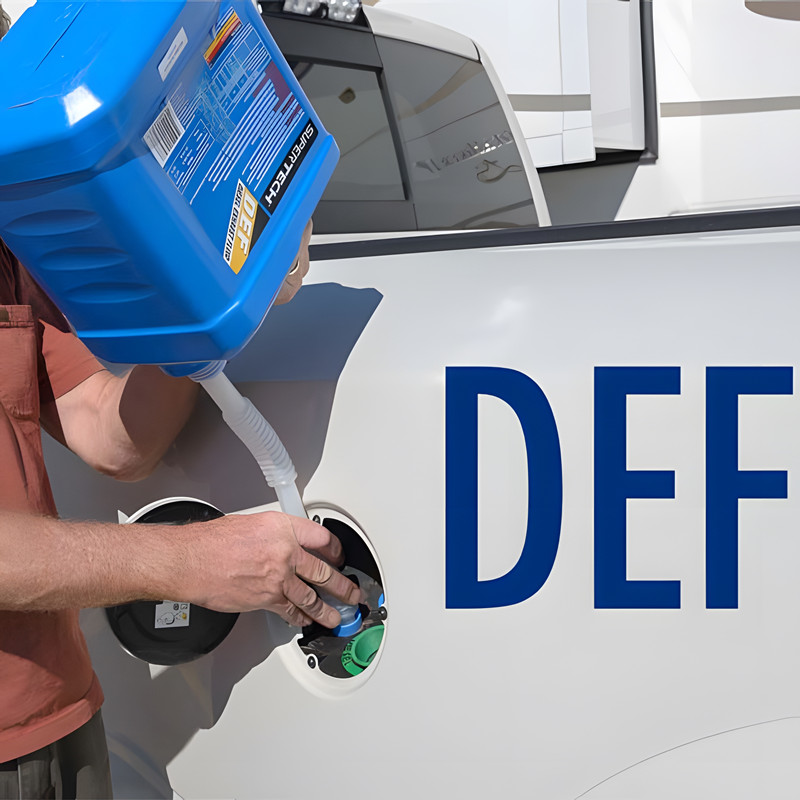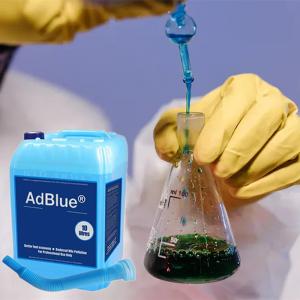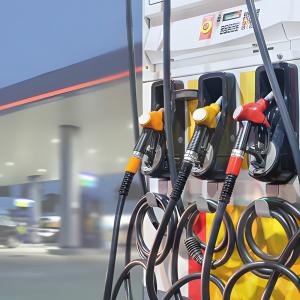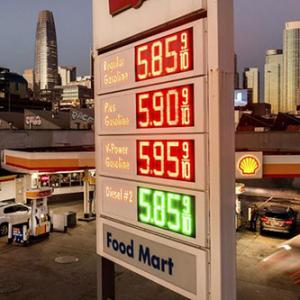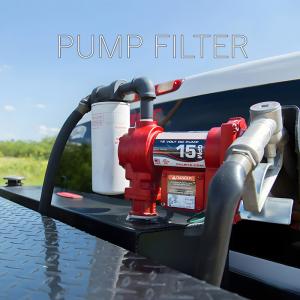The Truth About DEF Fluid: How Long It Really Lasts in Trucks & Equipment
How Long Does DEF Fluid Last in your truck? Your Ultimate Guide to Saving Money and Avoiding Breakdowns
Introduction: The Unsung Hero of Your Diesel Engine
Every modern diesel truck, tractor, and piece of heavy-duty equipment has an unsung hero working behind the scenes: Diesel Exhaust Fluid, or DEF fluid. This seemingly simple mixture of urea and deionized water is crucial for a vehicle's Selective Catalytic Reduction (SCR) system, which helps reduce harmful nitrogen oxide (NOx) emissions and meet strict environmental regulations.
But unlike diesel fuel, DEF fluid has a shelf life. It’s not something you can just buy in bulk and forget about. For fleet managers, farmers, and heavy equipment operators, understanding the lifespan of DEF fluid is not just about compliance; it's about protecting expensive machinery, preventing costly breakdowns, and ensuring your business stays profitable. So, how long does DEF fluid really last in a truck? And what happens when it goes bad? This guide will answer these critical questions and provide you with a definitive plan for managing your DEF supply.
1. What Is DEF Fluid and Why Its Lifespan Matters
The primary job of DEF fluid is to transform harmful NOx emissions into harmless nitrogen and water vapor. It’s injected into the exhaust stream, where it reacts with the hot gases inside the catalytic converter. This process, known as SCR, is essential for a clean and efficient engine.
However, the effectiveness of DEF fluid is entirely dependent on its quality. Using fluid that has gone bad can have severe, costly consequences:
-
Decreased Performance and Compliance: Expired or degraded DEF fluid loses its ability to neutralize NOx. This means your vehicle will fail to meet emissions standards, which can lead to regulatory fines and inspections.
-
System Clogging and Damage: The urea in DEF fluid can break down and form solid crystals when exposed to high temperatures or contamination. These crystals can clog the injector nozzle, the lines, and the catalyst itself, leading to thousands of dollars in repairs.
-
Engine Derating or Shutdown: Most modern diesel engines are equipped with sensors that monitor the SCR system's performance. If the system detects that the DEF fluid is no longer effective, it will trigger a warning light. If the problem is ignored, the engine's power will be automatically reduced (a process known as derating) or even shut down completely to prevent damage and ensure compliance. This can leave a driver stranded and create major operational headaches.
2. The Key Factors Determining DEF Fluid Lifespan
The life of your DEF fluid is not a fixed number; it depends on a few critical variables. Understanding these factors is the key to proactive management.
Storage Temperature
Temperature is the single most important factor affecting DEF fluid shelf life. The urea in the fluid is sensitive to heat, and prolonged exposure to high temperatures will cause it to decompose.
Here's a general guide for its shelf life based on constant storage temperature:
-
Below 50°F (10°C): Up to 36 months
-
Below 77°F (25°C): Up to 18 months
-
Below 86°F (30°C): Up to 12 months
-
Below 95°F (35°C): Up to 6 months
-
Above 95°F (35°C): Less than 2 months
This is why DEF fluid stored in a climate-controlled warehouse will last much longer than fluid left in a hot truck cab or in an unshaded DEF transfer tank. Fluctuating temperatures can also accelerate this process, so a consistently cool environment is best.
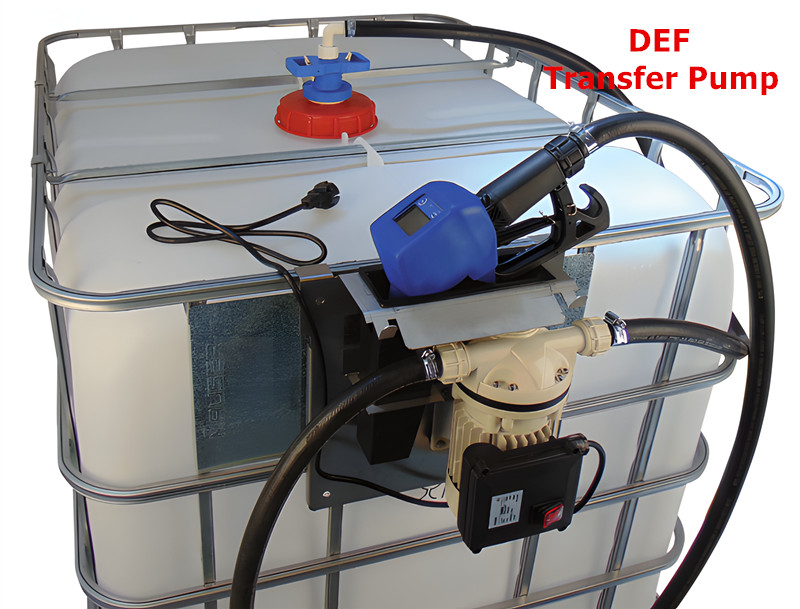
Contamination and Impurities
DEF fluid is a high-purity product. Even a small amount of contamination can ruin an entire batch. Common contaminants include diesel fuel, oil, coolant, dust, and even water from a non-purified source. When mixed with these substances, DEF fluid can quickly form a sticky, corrosive sludge that will damage the entire SCR system. This is why it is absolutely critical to use dedicated, clean equipment for all handling and refilling. Using a fuel tank pump or any component that has touched diesel fuel to transfer DEF is a guaranteed way to contaminate your fluid.
Time and Storage Conditions
Most manufacturers and industry bodies, like the American Petroleum Institute (API), state that a sealed container of DEF fluid has a shelf life of approximately one year in optimal conditions. Once a container is opened, the fluid is exposed to air, which can also contribute to degradation.
For DEF fluid stored in a vehicle’s tank, the lifespan can be shorter, especially if the vehicle is sitting idle. A truck that has been unused for a year, particularly in a hot climate, should have its DEF fluid drained and replaced. The fluid is constantly exposed to temperature fluctuations inside the tank, which can cause the urea to break down more quickly than in a properly stored sealed container.
3. How to Know If Your DEF Fluid Has Gone Bad
Before you add more fluid to your fuel tank, a quick check can save you from a major problem.
Visual Inspection
Pure, uncontaminated DEF fluid is a clear, transparent liquid. It looks just like water. If your DEF fluid appears cloudy, discolored (yellow, brown, or green), or has a visible sediment or crystallization at the bottom, it is likely contaminated or has gone bad. Do not use it.
Vehicle Warning Systems
Your truck's dashboard is your first and best line of defense. Pay close attention to any DEF-related warning lights or messages. They can signal a low fluid level, a sensor malfunction, or a quality issue. Ignoring these warnings will eventually lead to the dreaded engine derating.
Professional Tools: The Refractometer
For large fleets or gas station maintenance companies, a refractometer is an invaluable tool. This simple device accurately measures the concentration of urea in the fluid. A normal concentration is between 32.5% and 33.3%. If your reading falls outside of this range, the fluid is compromised and should be discarded.
4. Practical Tips for Maximizing DEF Lifespan
By following a few simple best practices, you can ensure your DEF fluid remains effective and your equipment stays protected.
-
Proper Storage Containers: Never store DEF fluid in anything other than an ISO-certified container. These are typically made from high-density polyethylene, stainless steel, or specific plastics that will not corrode or contaminate the fluid. Avoid using old plastic fuel tank containers or any metal drums that are not specifically certified for DEF.
-
Optimal Storage Environment: Store your DEF supply in a cool, dry, and dark place. This means avoiding direct sunlight and areas that get excessively hot. For bulk storage, a dedicated shed or indoor space is ideal.
-
Dedicated Equipment and Handling: Always use clean, dedicated equipment for handling DEF fluid. This includes funnels, pumps, and hoses. For large-scale operations, investing in certified DEF transfer tanks with integrated pumps is the smartest way to prevent cross-contamination and ensure a smooth, clean transfer.
-
First-In, First-Out (FIFO) Rule: Just like managing any perishable inventory, always use your oldest DEF fluid first. This ensures that you are constantly cycling through your supply before it has a chance to degrade over time.
5. Frequently Asked Questions (FAQs)
-
Q1: What happens if I use expired or contaminated DEF fluid?
-
You risk expensive damage to your SCR system, including clogged injectors and catalyst failure. Your vehicle's engine will likely go into a derate mode, severely limiting its power and operational capability.
-
-
Q2: Does DEF fluid freeze in winter? Is that a problem?
-
Yes, DEF fluid freezes at approximately 12°F (-11°C). However, this is not a problem for the truck's operation. Modern diesel engines are equipped with heated DEF tanks and lines that will automatically thaw the fluid as the engine runs. The only risk is if the fluid freezes in a non-heated container, which can cause the container to expand and burst.
-
-
Q3: Can I put DEF fluid in my diesel fuel tank?
-
NO! This is one of the most catastrophic mistakes you can make. DEF fluid in a fuel tank will cause immediate and severe damage to the Fuel pump and injectors, leading to complete engine failure. Always double-check your nozzle and the tank opening before dispensing.
-
-
Q4: Is DEF fluid from a gas station reliable?
-
Most gas station pumps and bulk suppliers adhere to strict quality standards and are a reliable source. However, you should always check the pump or container for an API certification mark, which guarantees the fluid meets purity and concentration standards.
-
Conclusion: Proactive Management is Your Best Asset
The seemingly simple act of managing your DEF fluid properly is a cornerstone of modern diesel engine maintenance. It is the key to ensuring compliance with emissions regulations, protecting your valuable equipment from costly failures, and maintaining operational efficiency.
Whether you're a major oil depot or a single farmer, understanding the lifespan of DEF fluid and implementing proper storage and handling protocols is a non-negotiable part of your business. By using dedicated DEF transfer tanks and always checking the quality of your fluid, you can avoid unnecessary headaches and keep your engines running cleanly and powerfully for years to come.
